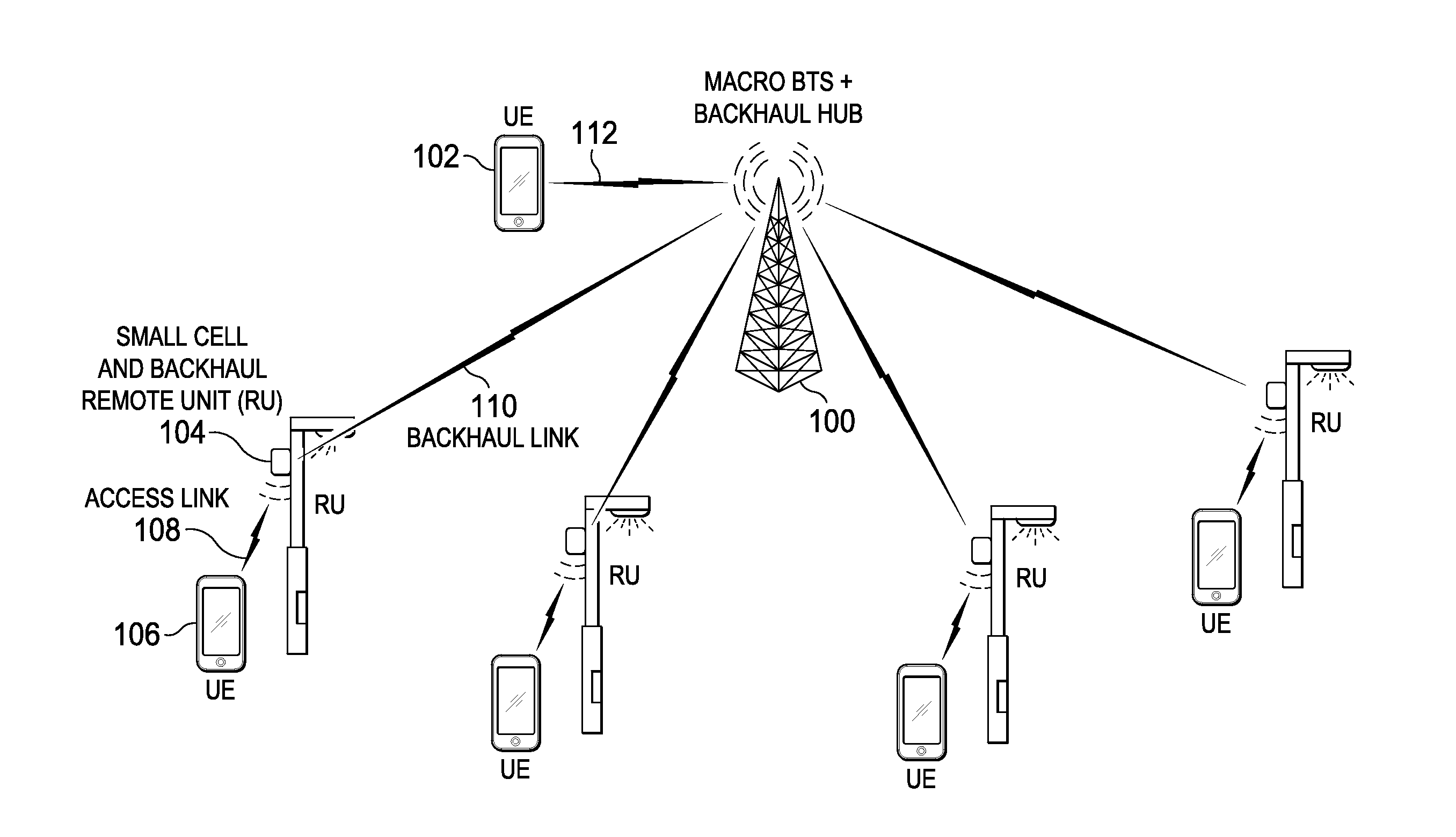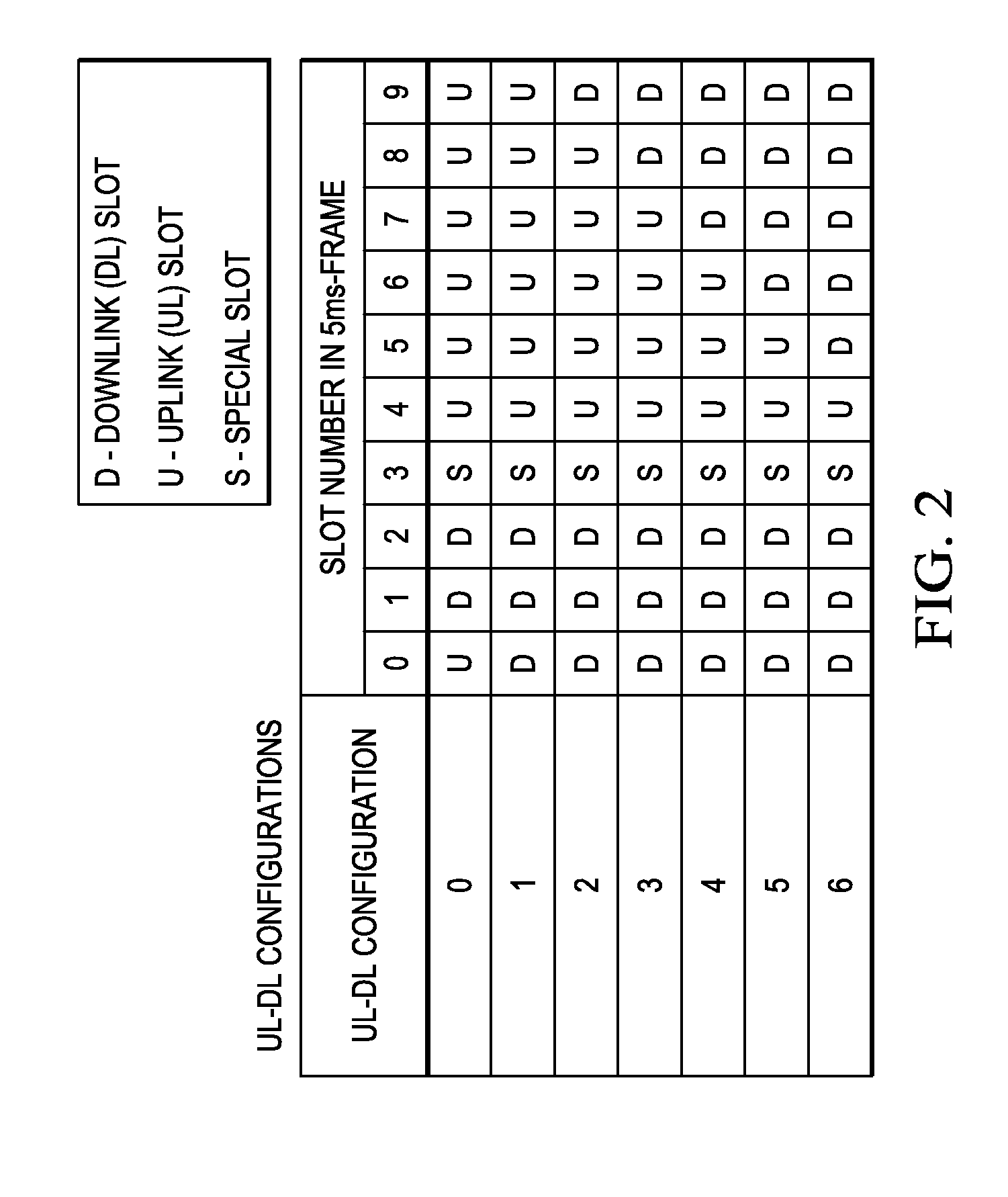Low overhead signaling for point to multipoint nlos wireless backhaul
- Summary
- Abstract
- Description
- Claims
- Application Information
AI Technical Summary
Benefits of technology
Problems solved by technology
Method used
Image
Examples
Embodiment Construction
[0020]Some of the following abbreviations are used throughout the instant specification. The following glossary provides an alphabetical explanation of these abbreviations.
[0021]BLER: Block Error Rate
[0022]CQI: Channel Quality Indicator
[0023]CRS: Cell-specific Reference Signal
[0024]CSI: Channel State Information
[0025]CSI-RS: Channel State Information Reference Signal
[0026]DCI: Downlink Control Information
[0027]DL: DownLink
[0028]DwPTS: Downlink Pilot Time Slot
[0029]eNB: E-UTRAN Node B or base station or evolved Node B
[0030]EPDCCH: Enhanced Physical Downlink Control Channel
[0031]E-UTRAN: Evolved Universal Terrestrial Radio Access Network
[0032]FDD: Frequency Division Duplex
[0033]HARQ: Hybrid Automatic Repeat Request
[0034]HU: (backhaul) Hub Unit
[0035]ICIC: Inter-cell Interference Coordination
[0036]LTE: Long Term Evolution
[0037]MAC: Medium Access Control
[0038]MIMO: Multiple-Input Multiple-Output
[0039]MCS: Modulation Control Scheme
[0040]OFDMA: Orthogonal Frequency Division Multiple Access...
PUM
 Login to view more
Login to view more Abstract
Description
Claims
Application Information
 Login to view more
Login to view more - R&D Engineer
- R&D Manager
- IP Professional
- Industry Leading Data Capabilities
- Powerful AI technology
- Patent DNA Extraction
Browse by: Latest US Patents, China's latest patents, Technical Efficacy Thesaurus, Application Domain, Technology Topic.
© 2024 PatSnap. All rights reserved.Legal|Privacy policy|Modern Slavery Act Transparency Statement|Sitemap



